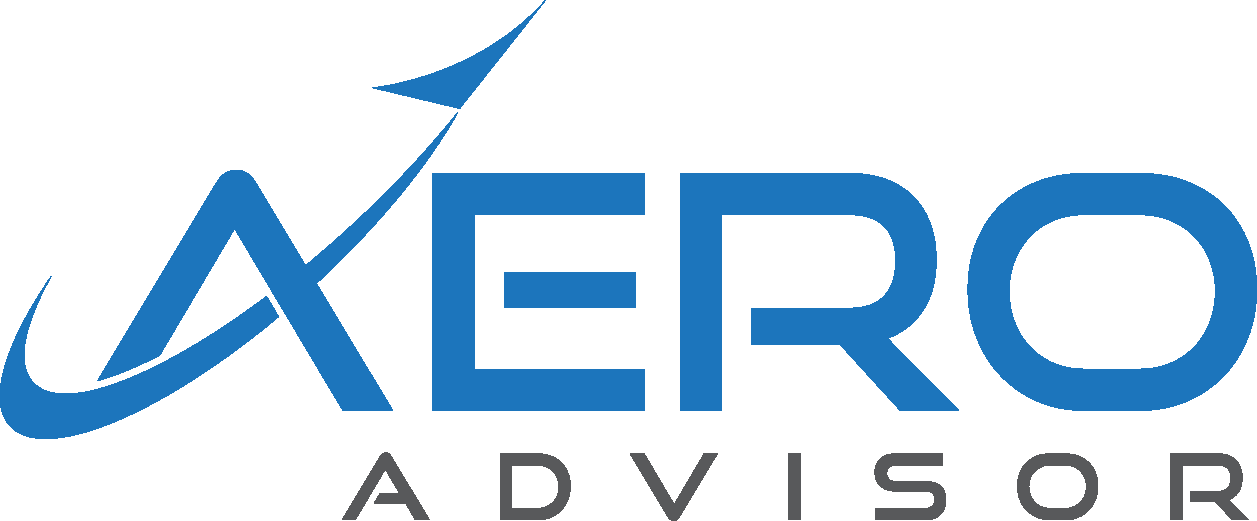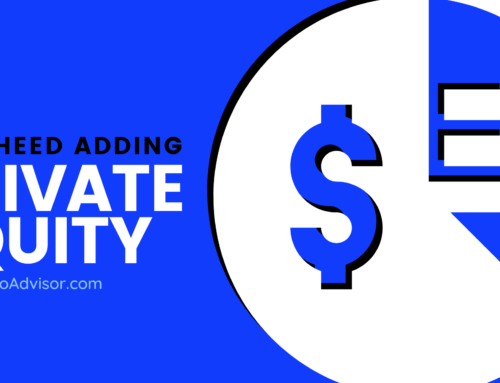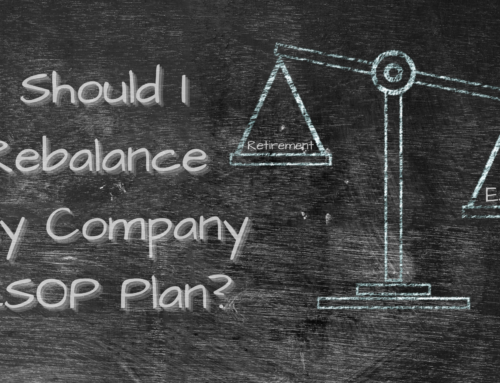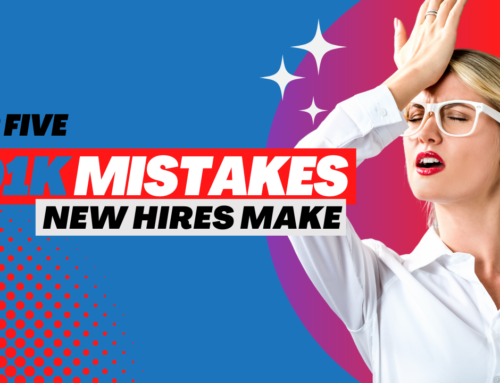Although many Lockheed Martin employees have not been affected by the many layoffs due to the COVID-19 pandemic, friends, family and co-workers might have been. Another aerospace giant – Boeing laid almost 7,000 workers in late May. Feel free to pass this info along to those with questions.
So for those people that might be facing a job-hunt – what should you do with your 401k before you land your next gig?
You have four options for that old 401k:
- Leave it where it’s at. You can leave your 401k at your old job as long as it’s over $5,000 (usually – can vary by plan).
- Roll it over to a traditional IRA. After you have left your old employer, you can roll the entire balance of your 401k over into an IRA.
- Roll it over to a new 401k. Once you land a job, you might be able to roll your old 401k to a new plan if your employer offers one.
- Take a distribution. You can take up to $100,000 in 2020 out of your retirement plan and you can spread the taxes out over three years.
Let’s talk about each option in a little more detail.
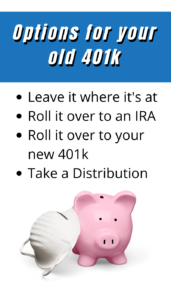 Leave your 401k at your old employer
Leave your 401k at your old employer
If you have over $5,000 in your old 401k, you can leave it at your former employer. You won’t be able to contribute to it and the allocations will stay the same as before you were laid off. If you think you might need to access the funds in the 401k to help you get by – you might want to adjust your investment mix with that in mind.
Leaving your old 401k where it’s at might be a good idea if you aren’t sure which option is right for you – because you can still do the other options down the road. Your 401k also might have lower fees than going the IRA rollover route and you won’t have to worry about paying taxes that you would be hit with if you took a distribution.
Roll it over to an IRA
Another option is taking your old 401k and rolling into a traditional IRA. You can open a traditional IRA through your bank or an investment firm. If done correctly, the rollover won’t trigger a taxable event and having funds in the IRA might give you quicker access to them should you need them soon. Most IRA custodians (the ones that hold onto your money) will let you set up ACH to get quick access to those funds if you need them.
 A possible downside is while the rollover is in process, you won’t be invested in the market (you have to move funds over in cash) and depending on where you open the IRA, the fees you pay might be higher than they were inside your 401k. Your IRA account will have a lot more options available to invest in than your old 401k provider (again – this can depend on where you choose to open your IRA).
A possible downside is while the rollover is in process, you won’t be invested in the market (you have to move funds over in cash) and depending on where you open the IRA, the fees you pay might be higher than they were inside your 401k. Your IRA account will have a lot more options available to invest in than your old 401k provider (again – this can depend on where you choose to open your IRA).
You’ll definitely want to consider your allocation (the investment mix in the account) depending on if you think you might need to access the funds in the account if things were to get tight while you are searching for your next source of income. Try to live off your short term savings so you might be able to avoid touching your retirement savings and having to pay taxes on those funds.
For more info on rollovers, click HERE
Take money out
The CARES Act that was passed a few months ago gave taxpayers more access to their retirement accounts to help those affected by the COVID-19 virus. You can read more here, but basically the act allows you to take up to $100,000 out of your retirement accounts. Depending on how the funds were put into your 401k (we’re going to assume you put in the funds pre-tax), you will have to pay taxes on the distribution but can spread the tax bill out over three years.
You also have three years to put the funds back in a retirement account (401k or IRA) and avoid getting hit with the taxes altogether. It’s a good idea to work with a financial planner and tax professional to figure out how taking this distribution might affect your financial picture.
Roll it into your new 401k when you land a job
Once you find new employment, most 401k plans will allow you to roll your old 401k into your new plan. Just check with your HR contact or plan administrator to make sure this is possible. You’ll also want to check out the features of the new plan including the investment options and management fees to make sure the plan will be the right choice for you.
These are a few options for your old 401k. You might also consider rolling over your former employer plan to your new 401k – but you’ll need to make sure that 401k allows rollovers into the plan. If you have additional questions, feel free to email Brian@TheAeroAdvisor.com
